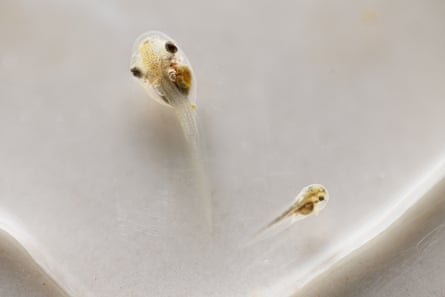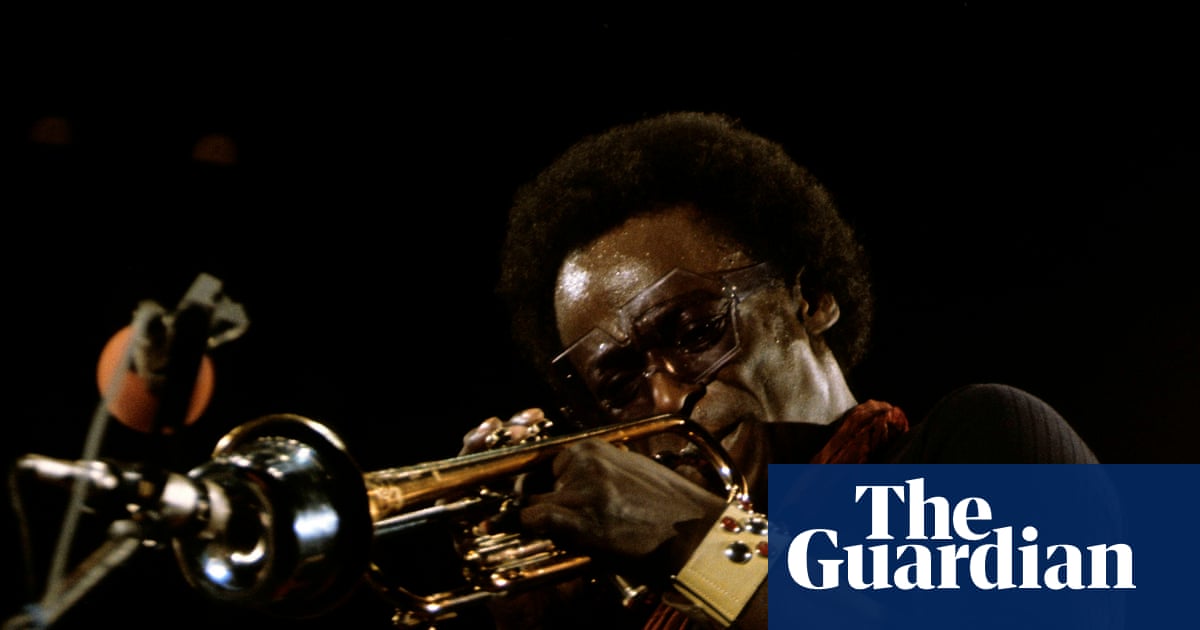On the way to her office at the Charles Darwin research station, biologist Miriam San José crouches down near a shallow pond shrouded by vegetation and reaches deep into the foliage, pulling out a small green plastic box recorder.
She left it there overnight to capture the infamous croaks of a Fowler’s snouted treefrog (Scinax quinquefasciatus), known to Galápagos scientists as an invasive threat, with repercussions researchers are only beginning to grasp.
Despite abounding with wildlife – centuries-old giant tortoises, swimming iguanas, and the finches that sparked Darwin’s theory of evolution – the Galápagos archipelago off the coast of Ecuador has long been free from amphibians. Until recently, no frogs, toads, newts, or salamanders waddled or hopped on its volcanic islands.
In the late 1990s, that changed. Some small tree frogs made their way from mainland Ecuador to the islands, likely as stowaways on cargo ships.

Genetic studies suggest that, over the years, there have been repeated accidental introductions to the archipelago, and the frogs now have a strong foothold on two islands: Isabela and Santa Cruz. The population is growing so fast that scientists have been struggling to keep track, estimating numbers in the hundreds of thousands on each island, across urban and agricultural areas, but also in the protected Galápagos national park.
When San José marked frogs and tried to recapture them in the following 10 days – a technique commonly used to make estimates of animal populations – she could find just one marked frog every once in a while, suggesting their populations were huge. They estimated 6,000 frogs in a single pond. “Our estimates are still very conservative,” says San José. “I am pretty sure there are even more.”
The frogs’ abundance is clear from the acoustic chaos they cause. “The amount of frogs and the noise – it’s really insane,” says San José.
For the scientists, their nightly mating calls are helpful in estimating their presence in far-flung areas, using recorders like the one outside San José’s office. But local farmers say the calls are so raucous they keep them up at night.
“During the wet season, I constantly hear their calls and they’re really loud,” says Jadira Larrea Saltos, a coffee farmer at Finca La Envidia on Santa Cruz.
“At first it was a surprise, seeing the first frogs in the area,” says Larrea Saltos, who started noticing their abundance about three years ago when one jumped on her hand as she was walking out of her front door. Now she has more poultry on her property, which she thinks has helped keep the populations relatively at bay.
The noise isn’t the fundamental problem, though. While the species has been in the Galápagos for almost 30 years, scientists still know very little about its impact on the archipelago’s delicately balanced land and water ecosystems.

On islands, it is very common for invasive species to thrive, as they have none of their natural predators. The Galápagos counts 1,645 invasive species, many of which are seriously disrupting the safety of its endemic ones. Avian vampire flies are bleeding rare bird hatchlings dry, and the hardy blackberry plant is encroaching on the Scalesia forests.
A 2020 study suggests the invasive frogs are voracious insect eaters, and might be disproportionately consuming rare insects found only on the archipelago, or depleting the food sources of the islands’ rare birds, disrupting the food chain. Since the frogs’ diet is dominated by moths, they could even be affecting pollination on the islands, according to ecologist María del Mar Moretta-Urdiales, who was involved in the study.
The Galápagos frogs have exhibited some unusual traits, including living in brackish water, which is uncommon for amphibians. Their metamorphosis process is also extremely variable, with some tadpoles turning into frogs very quickly and others taking a long time: San José observed one which remained as a tadpole in her lab for six months.
“We really don’t know this part,” she says, worried the tadpoles could be affecting the islands’ freshwater, a very scarce resource in Galápagos. And even though studies show that the Galápagos diving beetle now eats large numbers of tadpoles in its diet, it doesn’t seem to be making a dent in their populations.

Methods to curb the frogs in the early 2000s were largely unsuccessful. Park rangers tried capturing large numbers by hand and gradually increasing the salinity of lagoons in vain. Research suggests spraying coffee – which is highly toxic to frogs – or using electrocution could help, but these methods aren’t necessarily safe for other rare Galápagos species.
Without answers to more of the basic questions about their biology and impact, culling the frogs might not even be the right way to go, says San José.
While she hopes the growing use of environmental DNA techniques and genetic analysis will help her team make sense of the invader, funding for the project has been hard to come by. “Everybody wants to give funding for preserving frogs,” says San José. “But it’s harder to find funding for an introduced frog that you might want to control for.”
Find more age of extinction coverage here, and follow the biodiversity reporters Phoebe Weston and Patrick Greenfield in the Guardian app for more nature coverage

.png) 4 hours ago
5
4 hours ago
5

















































